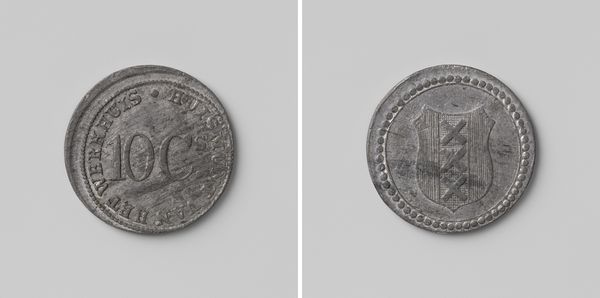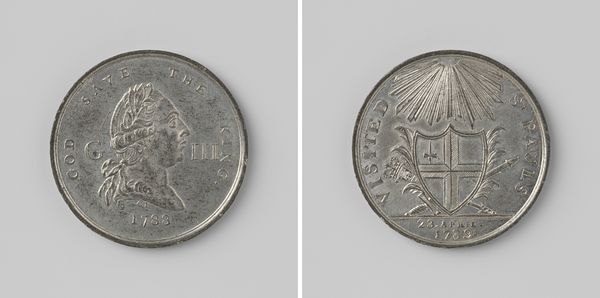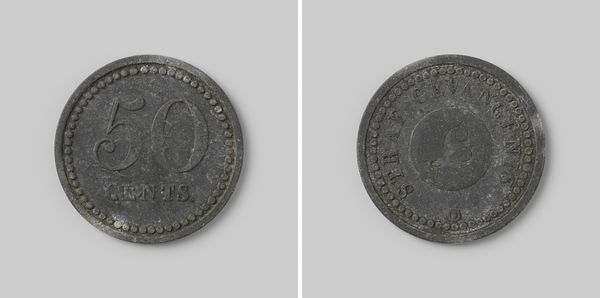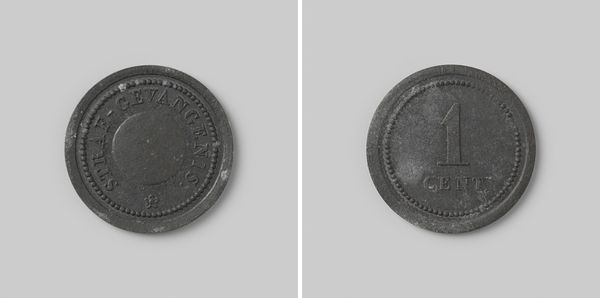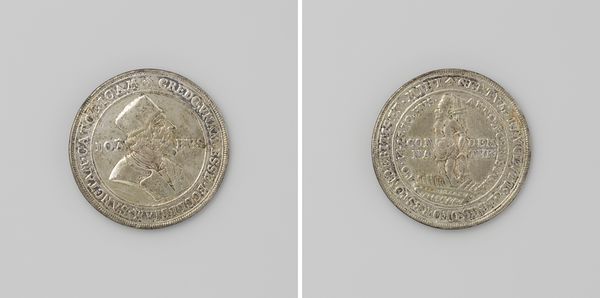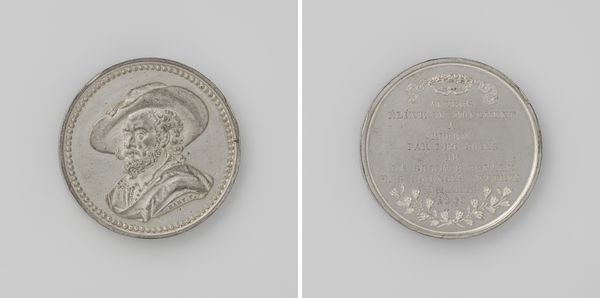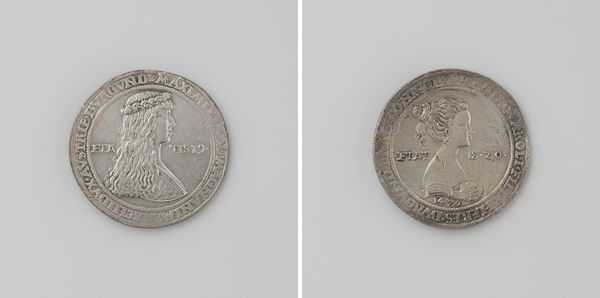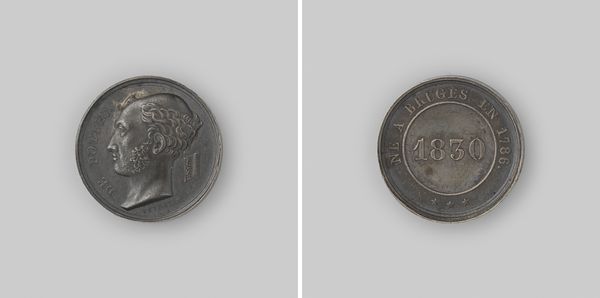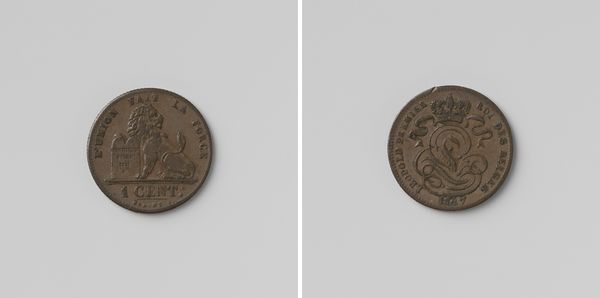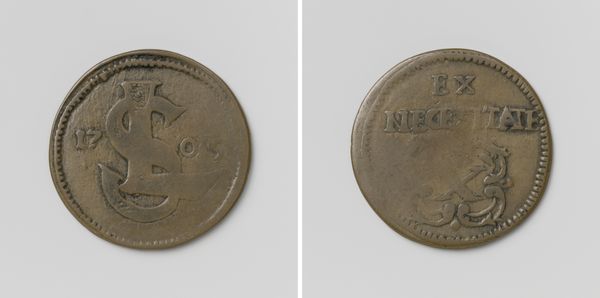
Betaalpenning voor Nederlandse strafgevangenissen, 10 cents gemerkt L (Leeuwarden) before 1861
0:00
0:00
print, metal, relief
#
dutch-golden-age
# print
#
metal
#
relief
Dimensions: diameter 2.4 cm, weight 4.57 gr
Copyright: Rijks Museum: Open Domain
Editor: Here we have what’s called a “Betaalpenning voor Nederlandse strafgevangenissen, 10 cents gemerkt L (Leeuwarden)” - that's "Prison Token for Dutch Prisons, 10 cents marked L", made before 1861. It appears to be some sort of metal coin or token. It's interesting how something so small could represent such a large concept like incarceration and social control. What can you tell me about this piece? Curator: Indeed. These tokens weren’t legal tender but circulated within the prison walls, buying necessities, a localized and controlled economy. The "L" marks it from Leeuwarden prison, reflecting the institutional decentralization of the penal system at the time. How does understanding its place within the prison system change your perception? Editor: It makes me think about the power structures inherent in that controlled environment. Like, the prisoners can "earn" tokens, but those tokens are only valuable *within* the prison system, keeping them reliant on that system. What I thought was a purely historical object now feels politically charged. Curator: Precisely. Consider the metalwork itself. It is durable, meant to withstand time and continuous handling, but simultaneously, these objects reinforce a specific hierarchy and dependency. What do you think the visual impact of this object might have had on those incarcerated? Editor: I hadn't considered that, but it definitely seems like a constant, material reminder of their situation. Something unavoidable, you know? I came in thinking this was just an old coin, but now I'm seeing it as a powerful symbol of institutional control. Curator: And that shift in perspective, seeing the confluence of history, power and materiality, is precisely how objects like these can tell us so much about society's values, or perhaps, its failures. It is really important that museums show us how things that seem small, or simple, may have a major influence in everyday's reality, and we learn and not to make the same mistakes.
Comments
No comments
Be the first to comment and join the conversation on the ultimate creative platform.
